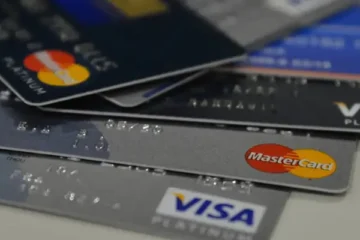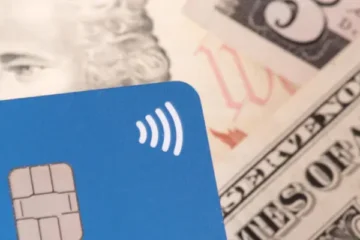How to Create an Efficient Family Budget
Tired of watching your paycheck vanish before the month’s over? You’re not alone. With rent, groceries, and bills skyrocketing, living on one income isn’t easy.
Advertisement
That’s why a solid family budget isn’t optional anymore—it’s survival. In this guide, you’ll learn how to build one from scratch, dodge common mistakes, and get the whole crew on board. Let’s do this.
Advertisement
Why Having a Family Budget Just Makes Sense
Think budgeting is only for people with six-figure incomes? Nah, that’s backwards. Truth is, the less money you make, the more important it is to know exactly where it’s going. When every dollar counts, you can’t afford to be guessing.
Here’s why having a family budget is a total game-changer:
Advertisement
- You stop the leaks. Sometimes the problem isn’t how much you make—it’s how much quietly slips through your fingers without you even noticing.
- You stay out of dumb debt. When you know your limits, you stop swiping the credit card for random stuff you can’t really afford.
- You can actually plan ahead. Want a better car? A family vacation? To stop living paycheck to paycheck? It all starts with having a clear plan.
- You stress way less. That constant “Is the rent gonna bounce this month?” kind of panic? A budget helps shut that noise down.
A good family budget isn’t about being strict or miserable—it’s about finally having control over your money instead of letting it control you.
Biggest Budgeting Mistakes People Make

Alright, let’s keep it real—most people aren’t broke because they don’t make enough. They’re broke because they’re making the same money mistakes over and over without even noticing.
Budgeting isn’t about being perfect, but there are a few traps you’ll want to dodge if you don’t want your money to vanish every month.
Here are some of the biggest slip-ups that mess with people’s budgets (and how to avoid them):
- Not tracking your spending. Think you can keep it all in your head? Yeah, no. That $8 lunch, $12 Uber, $5 coffee… it adds up quick when you’re not watching.
- Ignoring the “little stuff.” Snacks, soda, random Target runs—they seem harmless, but they pile up. $10 a day is $300 a month. See the problem?
- Mixing personal and household money. If you live with a partner or roommate and aren’t clear on who pays for what, you’re headed for confusion—and probably arguments.
- Forgetting about “sometimes” expenses. Birthdays, holidays, oil changes, back-to-school stuff—they don’t come every month, but they do come. And when they do, they hit hard if you’re not ready.
The good news? These mistakes are super easy to fix once you spot them. And just making these small adjustments can already make your budget way more solid.
How to Start a Family Budget from Scratch
Alright, you’re here because you’re done winging it and finally want to know where your money’s going. Love that. Starting a family budget from zero might sound intimidating, but it’s actually way easier than you think — and once you start, you’ll wonder why you didn’t do it sooner.
Here’s a straight-up, no-fluff guide to get your budget rolling the right way:
1. Figure Out Exactly How Much Money You Bring In
We’re talking about everything — not just your paycheck. Add up all sources of income:
- Wages or salary
- Overtime
- Side gigs (Uber, DoorDash, freelance, etc.)
- Child support or government benefits
- Anything else that puts money in your account
This is your total monthly income. Write it down or plug it into a spreadsheet/app.
2. List All Your Fixed Expenses
These are the bills that show up every month and usually stay the same:
- Rent or mortgage
- Utilities (gas, electric, water)
- Internet and phone
- Insurance (car, health, etc.)
- Childcare or daycare
These are the “non-negotiables” — you have to pay them, so they go first in your plan.
3. Track Your Variable Expenses
These change from month to month but still eat up a big chunk of your cash:
- Groceries
- Gas and public transportation
- Eating out, drive-thrus, takeout
- Household items, pet care
- Entertainment, subscriptions
Be real with yourself here — don’t guess. Look at last month’s bank statement if needed.
4. Include Occasional or Seasonal Costs
These are the sneaky ones people often forget, and then boom — budget blown:
- Birthday gifts or holiday shopping
- School supplies and back-to-school expenses
- Car maintenance or yearly registrations
- Annual insurance premiums
- Vacations, family events
Try breaking these into monthly chunks. For example, if Christmas costs you $600, save $50/month year-round.
5. Do the Math
Now subtract your total expenses from your total income. What do you see?
- If you’ve got money left over: Sweet! That can go into savings, emergency funds, or paying off debt faster.
- If you’re in the red: Don’t panic. You’ll need to cut back on non-essentials or find ways to bring in more cash (side gigs, selling stuff, etc.).
The goal is simple: spend less than you make — consistently.
Free Tools That Make Budgeting Way Easier
Budgeting doesn’t have to be complicated—and you definitely don’t need to be a math genius.
Try these tools (most are free):
- Google Sheets or Excel: Simple, clean, and customizable. Tons of free templates out there.
- Apps like Mint, Goodbudget, or EveryDollar: Some sync with your bank account and organize everything for you.
- Notebook or paper planner: Old-school, but if it works for you, it works.
Bottom line: pick whatever you’ll actually stick with. No point in downloading apps you never open.
How to Organize Your Spending (So It Actually Makes Sense)
Ever feel like your money just vanishes and you’re not sure where it all went? That’s where organizing your spending makes a huge difference.
When you break everything into clear categories, it gets way easier to spot where you’re going overboard—and where you can make smarter choices without feeling deprived.
Think of your spending like buckets. Each one has a job. Here’s how to split it up in a way that’s super easy to follow:
- Fixed Costs: These are the bills that hit you every month, no matter what. Rent, car payments, phone bill, insurance. They’re consistent and predictable—so you can plan for them without surprises.
- Variable Costs: These change from month to month, depending on how you live. Groceries, gas, takeout, Target runs. One week you’re chill, the next you’re spending $80 on random stuff you didn’t know you “needed.”
- Seasonal or Irregular Costs: Stuff that only shows up once in a while but still needs to be in your budget. Like holiday gifts, school supplies, car registration, or that summer trip you promised the kids.
- Wants and Extras: This is where your budget can breathe—or get out of hand. We’re talking streaming services, fancy coffee runs, fast food, or that late-night Amazon scroll. They’re not “bad,” but they add up fast.
If you can cancel it, delay it, or skip it without it affecting your actual life—it’s probably a want, not a need. And that’s totally fine—as long as you’re aware of it.
When you look at your money this way, you’re not just tracking—you’re taking control. You’ll know what’s essential, what’s flexible, and what’s gotta go when times get tight.
How to Set Financial Goals with Your Family
Budgeting isn’t just about keeping the lights on and the fridge stocked—it’s also about making your dreams happen. Whether it’s a family vacation, buying a new car, or finally being able to sleep at night without stressing about bills, financial goals give your budget a purpose.
And here’s the real game-changer: get the whole family involved. When everyone’s on the same page, it’s easier to stay motivated. Even kids can understand the value of saving up for something cool—like a bike, a gaming console, or a trip to the beach.
So, how do you set goals that actually work?
Start by breaking them down:
- Short-term goals (1 to 3 months):
These are quick wins that keep the momentum going. Think stuff like paying off a credit card balance, saving $500 for emergencies, or cutting down grocery bills. - Mid-term goals (3 to 12 months):
These take a little more planning. Maybe you’re saving for a new laptop, a weekend getaway, or holiday gifts without using credit cards. - Long-term goals (1 year or more):
These are the big ones. Down payment for a house, upgrading your car, college savings, or building a solid retirement fund.
Make it real:
- Write your goals down. Not in your head—on paper, in an app, or on the fridge.
- Assign a dollar amount and a deadline to each goal.
- Track your progress month by month and talk about it as a family.
When your money has a mission, every dollar you save feels like a step forward—not just a sacrifice. And when the family sees results? That’s when the magic happens.
How to Adjust Your Budget When Life Gets Messy
Lost your job? Got slammed with a surprise medical bill? Maybe your car broke down the same week your kid needed new shoes. Yeah… life throws curveballs, and when it does, your budget needs to bend, not break.
The goal here isn’t to panic—it’s to pivot. A good budget isn’t set in stone; it should move with you, especially when things get tight.
Here’s how to deal when stuff hits the fan:
- Slash the non-essentials—ASAP. Cancel those streaming services you barely use. Cut back on takeout. Pause shopping apps. Focus only on what truly matters right now.
- Pick up the phone and negotiate. Call your landlord, utility company, or credit card issuer. You’d be surprised how often they’ll offer extensions, waive fees, or help set up a payment plan—but only if you ask.
- Use your emergency fund (without guilt). That stash you’ve been building? Now’s the time to use it. That’s exactly what it’s for—so don’t feel bad tapping into it.
- Put big goals on pause. Saving for a vacation or new car can wait. Shift your focus to surviving and staying afloat. You can dream big again once things settle down.
- Track every penny. In tough times, knowing exactly what’s coming in and going out becomes even more important. The more aware you are, the faster você sai do sufoco.
Life can get messy—but your budget can help you stay grounded. Just stay calm, make a plan, and take it one step at a time.
How to Keep Your Budget Working Month After Month
Making a budget is just the beginning—the real challenge is sticking with it. It’s not a “set it and forget it” kind of thing. If you build a budget and never check back in, it’s like setting a GPS and ignoring the directions.
Life changes. Bills go up, paychecks shift, and unexpected stuff always comes up. That’s why your budget needs a little TLC every now and then to keep doing its job.
Here are some easy ways to keep your budget alive and working for you all year long:
- Pick a “budget day.” Once a week or once a month, sit down and check your numbers.
- Update as needed. If expenses change or income goes up (or down), adjust it.
- Use the 50/30/20 rule. It keeps things balanced: 50% for needs, 30% for wants, 20% for savings.
- Celebrate small wins. Paid off a card? Saved a chunk of change? That deserves a high five!
How to Get the Whole Family Involved
Let’s be real: trying to manage a family budget all by yourself? That’s a recipe for burnout. You’re not the only one using the money, so why should you be the only one planning it?
When everyone pitches in—even the kids—it gets way easier to stay on track. Plus, it teaches some solid life lessons along the way.
Here’s how to make budgeting a team effort without turning it into a boring chore:
- Do a quick family budget meeting once a month. Keep it short and casual.
- Set family goals together. Like: “If we save $100/month, we’ll go camping in August.”
- Give people roles. One person tracks expenses, another finds deals or coupons.
- Talk about money openly. Especially with kids—it teaches them valuable life skills.
Ways to Save Without Feeling Miserable
Let’s be real—nobody wants to be that person who says no to every little pleasure just to save a few bucks. Budgeting doesn’t mean cutting out everything fun or living like you’re grounded for life. It’s about being smart with your money, not miserable.
The good news? You can save money without feeling like you’re constantly missing out. Here are some easy, no-stress ways to keep more cash in your pocket—without giving up your whole lifestyle:
- Buy in bulk. Especially stuff like toilet paper, rice, detergent.
- Use cashback and coupon apps. Ibotta, Rakuten, etc. Free money!
- Meal plan and cook at home. Way cheaper than DoorDash every night.
- Audit your subscriptions. Are you really watching all those streaming platforms?
Budgeting for your family might not sound super exciting—but honestly? It can change everything. Think of it like turning on your GPS instead of driving blind. You’ll know exactly what’s coming, where to slow down, and how to actually get where you want to go without crashing your wallet.
You don’t need to have it all figured out. You just need to begin.
Start small. Stay consistent. Get your people involved. And little by little, you’ll start feeling way more in control—and way less stressed.
So… what do you think? Isn’t it time to stop guessing and start owning your money?





